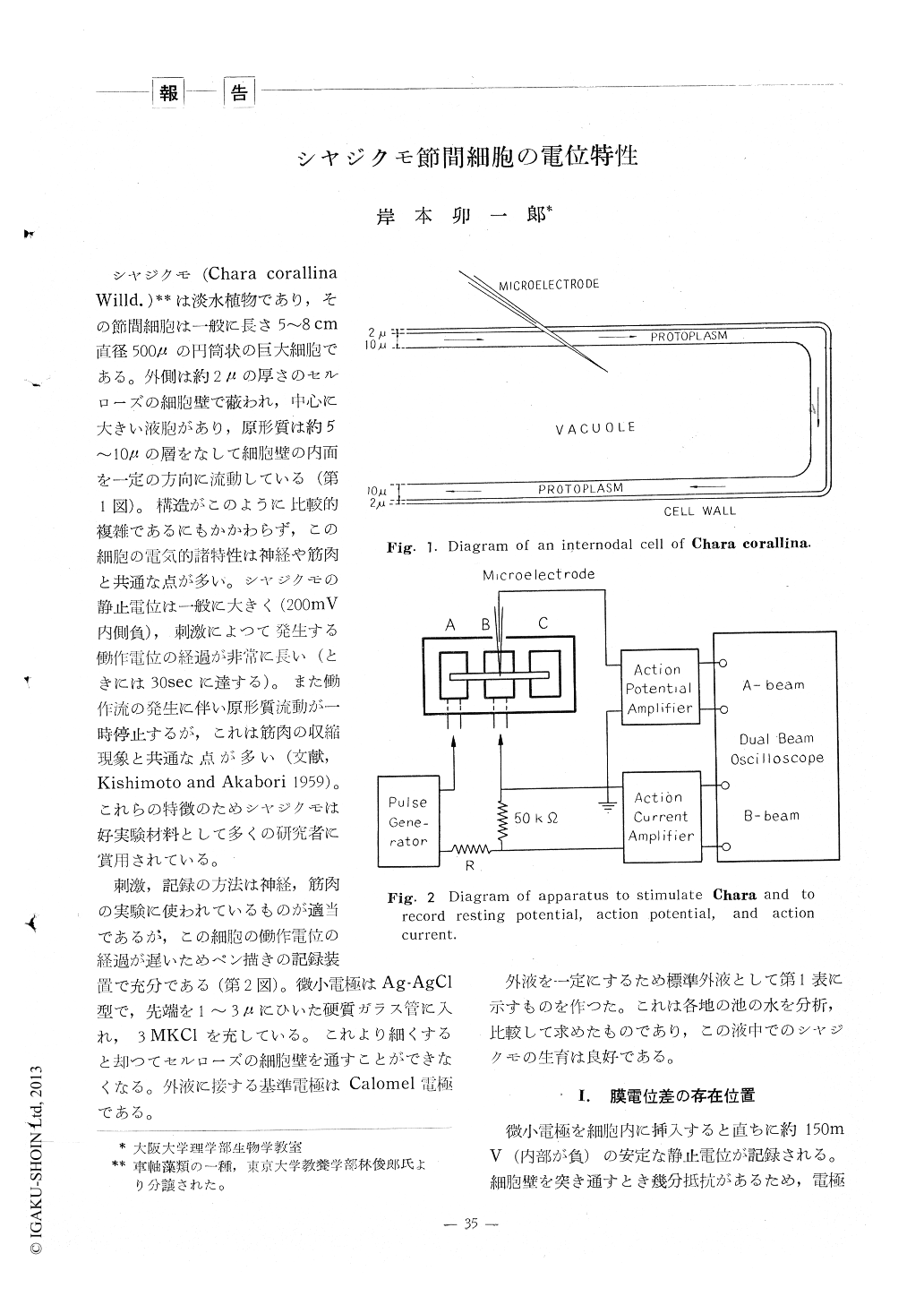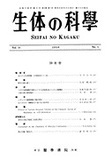- 有料閲覧
- 文献概要
- 1ページ目
シヤジクモ(Chara corallina Willd.)**は淡水植物であり,その節間細胞は一般に長さ5〜8cm直径500μの円筒状の巨大細胞である。外側は約2μの厚さのセルローズの細胞壁で蔽われ,中心に大きい液胞があり,原形質は約5〜10μの層をなして細胞壁の内面を一定の方向に流動している(第1図)。構造がこのように比較的複雑であるにもかかわらず,この細胞の電気的諸特性は神経や筋肉と共通な点が多い。シヤジクモの静止電位は一般に大きく(200mV内側負),刺激によつて発生する働作電位の経過が非常に長い(ときには30secに達する)。また働作流の発生に伴い原形質流動が一時停止するが,これは筋肉の収縮現象と共通な点が多い(文献,Kishimoto and Akabori 1959)。これらの特徴のためシヤジクモは好実験材料として多くの研究者に賞用されている。
刺激,記録の方法は神経,筋肉の実験に使われているものが適当であるが,この細胞の働作電位の経過が遅いためペン描きの記録装置で充分である(第2図)。微小電極はAg-AgCl型で,先端を1〜3μにひいた硬質ガラス管に入れ,3MKClを充している。これより細くすると却つてセルローズの細胞壁を通すことができなくなる。外液に接する基準電極はCalomel電極である。
The action potential of Chara corallina (ecorticated internode) often shows an "overshoot". Actually, the action current flows inwardly. This cannot be attributed to the enhanced influx of Na+ as postulated in nerve or muscle cells, since external solution contains only a low concentration of ions compared to the inside of Chara. It may be reasonable to suppose that the overshoot of the action potential and the inward flow of the action current are closely correlated to an enhanced Cl-efflux duing excitation.
The distribution of ions across the membrane of Chara differs from that predicted by diffusion potential theory, or Donnan equilibrium. Ions may be partly transported as such across the membrane according to the electrochemical potential gradients of these ions.
However, it is also necessary to suppose that some ions form complexes with polar macro-molecules at the membrane surface, and that these are transported according to the electrochemical potential gradients of their own. The electrical characteristics and the mechanism of excitation of Chara are discussed on this basis.

Copyright © 1959, THE ICHIRO KANEHARA FOUNDATION. All rights reserved.


